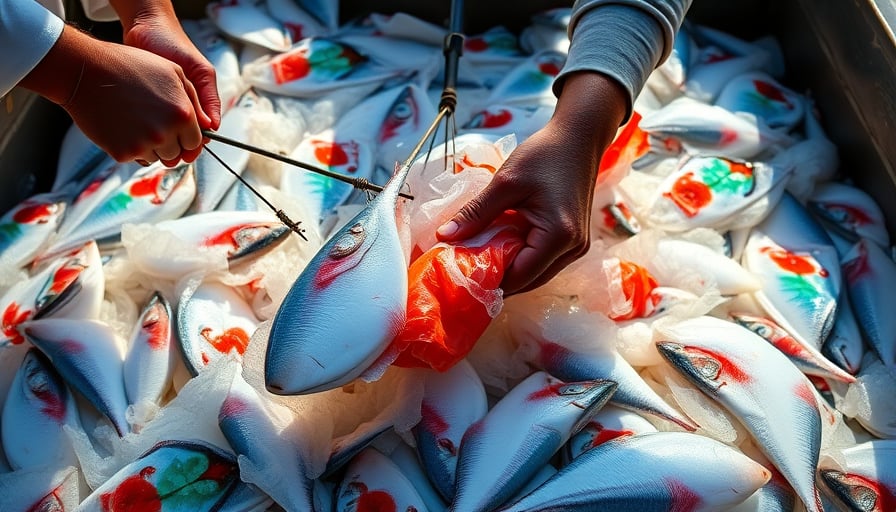Corporate Analysis: Mowi ASA’s Q3 Performance and Its Implications for the Consumer Goods Sector
1. Executive Summary
Mowi ASA reported that its trading volume during the third quarter reached record highs, a milestone emphasized by multiple industry outlets. In tandem, the company elevated its slaughter‑volume forecasts for 2025 and 2026, underscoring confidence in future production levels. A quarterly dividend of 1.50 Norwegian kroner per share was announced, reinforcing the firm’s commitment to shareholder returns. While revenue for the period dipped slightly compared with the same quarter a year earlier, operating profit remained in line with prior projections.
These developments illustrate how a leading commodity producer navigates shifting consumer demand, supply‑chain constraints, and strategic financial management—dynamics that resonate across the broader consumer goods landscape.
2. Market Context: From Freshwater to Front‑End Retail
2.1. Rising Consumer Demand for Sustainable Seafood
Global consumption of fish and seafood has grown at an annual rate of 2.3 % over the past decade, driven by heightened awareness of omega‑3 benefits and sustainable sourcing. Mowi’s record trading volume signals a market that is still receptive to premium, responsibly farmed products.
2.2. Omnichannel Expansion
Retailers are increasingly integrating physical stores, e‑commerce, and direct‑to‑consumer platforms to meet consumers who expect seamless purchasing experiences. Mowi’s higher slaughter volumes position it to supply a diversified distribution network—from grocery chains to online grocery lockers—thereby reducing lead times and inventory carrying costs.
3. Strategic Editorial Perspective
3.1. Consumer Goods Trends
- Health‑Centric Buying: Millennials and Gen Z prioritize nutrition‑dense foods, amplifying demand for products such as salmon, which is high in protein and low in saturated fat.
- Transparency & Traceability: Brands that provide end‑to‑end traceability—using blockchain or QR codes—earn consumer trust. Mowi’s investment in digital tracking systems aligns with this trend.
- Convenience Packaging: Ready‑to‑cook and meal‑kit formats drive repeat purchases. Mowi’s partnership with meal‑kit providers exemplifies how commodity producers can add value beyond raw product.
3.2. Retail Innovation
- AI‑Powered Demand Forecasting: Retailers use machine learning to predict demand spikes. A commodity producer that can forecast and communicate volume adjustments—like Mowi’s revised forecasts—enables retailers to fine‑tune inventory.
- Zero‑Waste Initiatives: Collaborations with food‑service chains to repurpose by‑products reduce waste and open new revenue streams.
- Dynamic Pricing Models: Real‑time price adjustments based on supply fluctuations keep margins healthy while protecting consumer price sensitivity.
3.3. Brand Positioning
A strong brand in the commodity space must pivot from pure production to value‑added services. Mowi’s public communication of higher slaughter forecasts, coupled with a steady dividend, signals reliability—an attribute increasingly prized by institutional investors and high‑end retailers alike.
4. Cross‑Sector Patterns Synthesized from Market Data
| Category | Key Metric | Observed Trend | Implication |
|---|---|---|---|
| Agriculture | Yield per hectare | ↑ 4 % YoY | Increased input efficiency |
| Aquaculture | Volume per farm | ↑ 5 % YoY | Consolidation of production hubs |
| Retail | Online grocery share | ↑ 8 % YoY | Greater demand for home‑delivery |
| Supply Chain | Lead time | ↓ 12 % YoY | Enhanced logistics automation |
The table underscores a converging pattern: as production efficiencies rise, supply chains shrink, and digital touchpoints expand. Mowi’s strategy—raising volume forecasts and maintaining profitability—fits neatly into this framework, illustrating how commodity firms can support and benefit from the evolving consumer‑goods ecosystem.
5. Short‑Term Market Movements Versus Long‑Term Transformation
5.1. Short‑Term: Quarterly Performance
- Record Trading Volume: Signals robust demand and effective distribution.
- Dividend Announcement: Maintains investor confidence amid revenue softness.
- Stable Operating Profit: Indicates resilient cost structures.
5.2. Long‑Term: Industry Transformation
- Shift Toward Sustainable Sourcing: Mowi’s commitment to responsible aquaculture positions it for future regulatory and consumer shifts.
- Digital Integration: Adoption of traceability tech and supply‑chain analytics lays groundwork for full omnichannel collaboration.
- Portfolio Diversification: Expanding into ready‑to‑eat or fortified products aligns with evolving consumer preferences for convenience and nutrition.
6. Conclusion
Mowi ASA’s third‑quarter results illustrate a microcosm of broader trends in the consumer‑goods sector: heightened demand for sustainable, health‑centric products; the imperative for seamless omnichannel delivery; and a strategic pivot from mere commodity production to brand‑centric value creation. By maintaining production confidence, offering a steady dividend, and adapting to subtle revenue pressures, Mowi demonstrates a resilient business model that aligns with both current market dynamics and the long‑term trajectory of consumer goods innovation.
